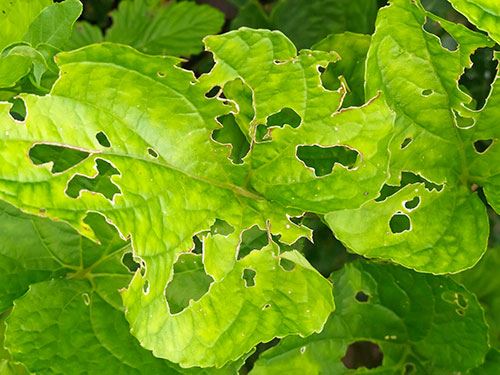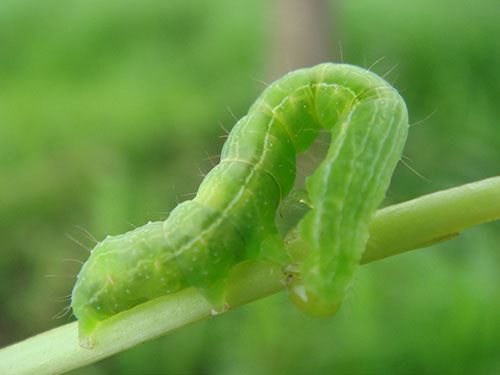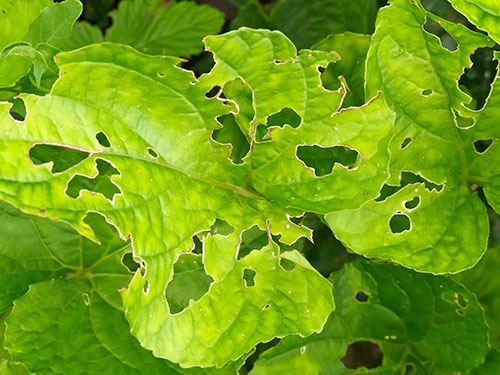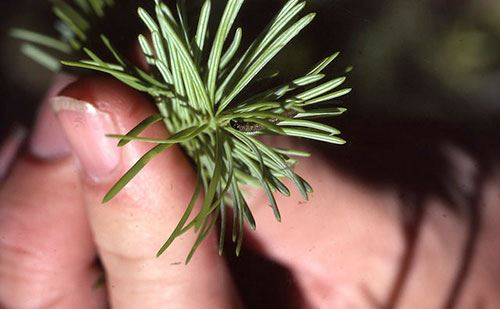
Getting Rid Of Budworms
By Chris Edmunds

Nothing is more frustrating than having a garden with chewed up leaves and buds. You may have encountered these telltale signs of an unwanted invasion of budworms, especially on your once blooming geraniums and petunias. Getting rid of them may seem like a challenging task, but once you know how to take care of these pests, you can continue enjoying your garden without the worry!
What Are Budworms?
 Budworms are the caterpillars of moths. While the adult moths are pale green and brown with light, wavy bands on their wings, their caterpillar stage is what causes all the problems! These caterpillars have a large appetite that will eat almost any of your favorite summer blooms but have a strong tendency to chew growing petunias and geraniums.
Budworms are the caterpillars of moths. While the adult moths are pale green and brown with light, wavy bands on their wings, their caterpillar stage is what causes all the problems! These caterpillars have a large appetite that will eat almost any of your favorite summer blooms but have a strong tendency to chew growing petunias and geraniums.
Similar to moths, you may not see budworms during the day, as most of their work is done during the night. The adult budworms set to work at dusk and can lay up to 1000 eggs in just a couple days, leaving them on leaves, buds, and blooms. That’s a lot of budworms! Once the eggs hatch into caterpillars, they cause destruction trying to fill their appetite.
The hatched caterpillars vary in color and can be brown, black, yellow, or green. Once they’ve got their fill after a month, the caterpillars fall to the soil to pupate. They’ll later re-emerge as ugly moths to start the whole process again.
As quick as they work, spotting budworms early on is key to stopping your garden from being chewed away!
Spotting Budworms in Your Garden
A little inspection in your garden is an easy way to spot budworms and prevent further damage. You’ll want to check your petunias and geraniums before they have budded in early spring and late May. Look for greyish-white eggs or brown caterpillars on leaves and buds. Another key indication to look for its black deposits that look like tiny seeds on the leaves and buds.
If these pests got past your early inspection, you will see their effects on your plants. Look for chewed up buds and blooms. Budworms will feast on the buds of geraniums from the inside out. An infected bud will bloom with chewed up flowers or not even at all. If budworms feed on your petunias, they will chew the entire blossom and their jagged petals are easy to spot.
Any of these signs are a clear indication that budworms have invaded your favorite plants.
Tackling Budworms
 Although getting rid of budworms can be a nuisance, you’ll want to tackle them right away to regain a healthy garden. Unfortunately, budworms aren’t the type of pests to die off at the start of colder temperatures. They need temperatures colder than 20℉ to deter their growth. Since our Kansas climate isn’t likely to reach those colder temperatures, budworms need to be taken down swiftly.
Although getting rid of budworms can be a nuisance, you’ll want to tackle them right away to regain a healthy garden. Unfortunately, budworms aren’t the type of pests to die off at the start of colder temperatures. They need temperatures colder than 20℉ to deter their growth. Since our Kansas climate isn’t likely to reach those colder temperatures, budworms need to be taken down swiftly.
One way to prevent budworms at the beginning of the spring season is to spray a generous amount of Captain Jack’s Deadbug Brew. This spray is safe enough to use for organic growing and can be found in ready-to-use spray bottles at any of our Kaw Valley locations. Continue to use the spray weekly until the early growing season for your petunias and geraniums is complete. You can find some at any one of our locations, such as our garden centre in Andover.
Sometimes using a spray can be difficult to kill the budworms that have moved inside the buds. If you spot any unopened buds with any noticeable holes or have droppings that look like seeds, carefully cut off the infested bud. Be sure to destroy the bud right away to avoid more infestations. If you happen to catch any budworms by eye, carefully pick them off and drown them in warm soapy water.
Watching your beautiful garden get destroyed by budworms is not fun. By inspecting your garden and getting rid of budworms as soon as they appear, you can continue to enjoy your garden. Stop by any of our garden centers for more tips on how to keep budworms away from your garden!

